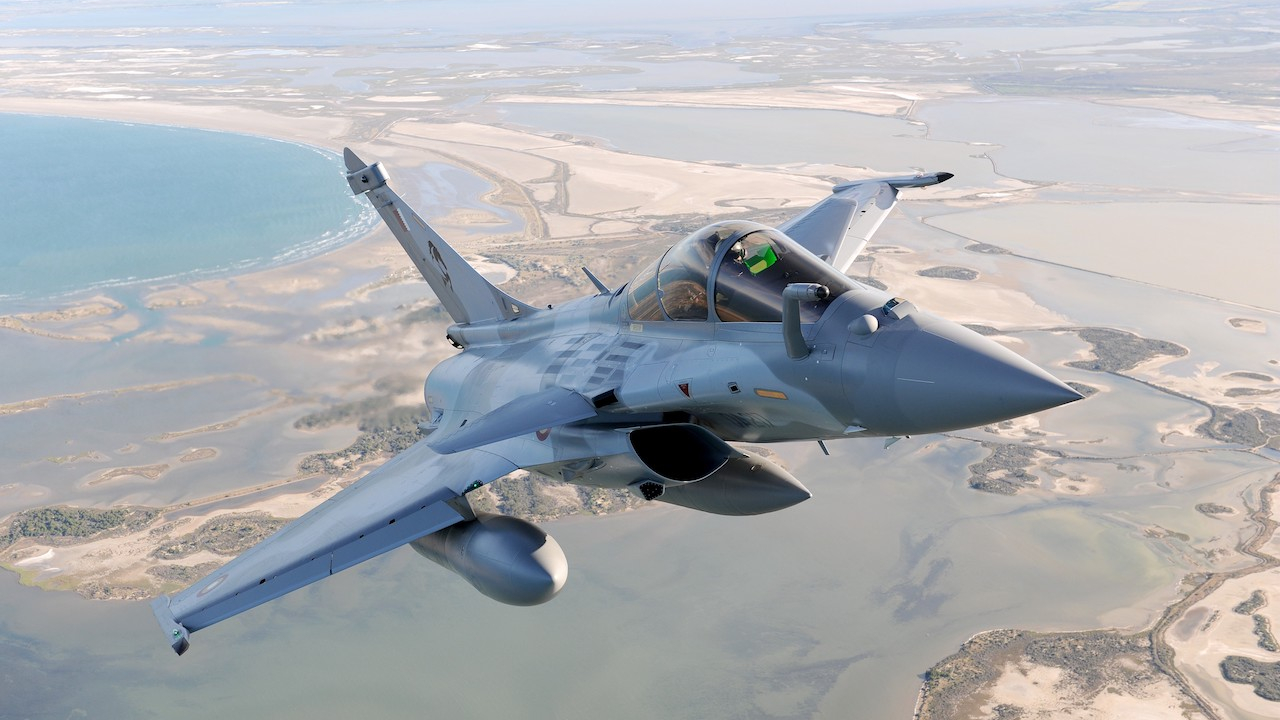Patti's twists and turns lead straight to new business

Patti Wagstaff is a woman who knows how to make an aircraft do impossible things.
As a former world aerobatic champion, she can twist and turn with an aptitude that would leave many front-line fighter pilots in her wake.
American aircraft manufacturer Raytheon, which owned the Beechcraft stable, took the innovative step a few years back to give Wagstaff their basic trainer – the Beechcraft T6 Texan. It forms the backbone of the US Air Force training system.
The performance was startling and, as a result, she wowed crowds all over the world with spectacular proof that, in the right hands, this aircraft could outmaneuver its competitors.
These performances raised the profile of the
The company has also expanded on the potential of the airframe and introduced to the region what it calls the AT-6, an armed version of the trainer.
In January, HBC brought both the T-6 and the AT-6 to
The Royal Moroccan Air Force (RMAF) was taking special interest in the displays as it has ordered 24 of the T-6C.
“This show not only provides us with an opportunity to exhibit the world’s most successful primary trainer, the T-6, to a broad international audience, it allows us to do so at the home base of our first T-6C customer – the Royal Moroccan Air Force,” said Jim Maslowski, president, US and international government business.
The T-6C model aircraft is an improved version of the T-6A Texan II. Like the T-6B for the US Navy, the T-6C features an integrated glass cockpit and advanced avionics suite that greatly expands advanced training opportunities.
Distinguishing it from the T-6B, the new T-6C features a hard point wing to allow for external fuel tanks. This equipment mirrors the systems and capabilities of today’s front-line strike-fighter aircraft, while retaining all the inherent training and flying characteristics that have made the T-6A the most successful primary trainer in the world.
The integrated glass cockpit features an upgraded, integrated Esterline CMC Cockpit 4000 avionics suite and includes an integrated avionics computer, a head-up display, up-front control panel, six multifunction displays, inertial reference unit, digital video recorder/data transfer system, radar altimeter and on-board synthetic training, such as no-drop bomb scoring.
These systems are integrated with a hands-on throttle and stick, providing the student pilot and instructor with an easy interface to the digital cockpit.
The CMC Cockpit 4000 avionics suite is the first in its class to incorporate a fully integrated and FAA-certified dual FMS/GPS navigation suite that meets the strictest required navigation performance standards of current and future national and worldwide airspace equipment requirements. The open architecture design of the Cockpit 4000 provides the flexibility to expand capabilities and continuously meet current and future training needs.
According to the RMAF, the T-6C will provide a single aircraft solution for training their fighter, transport and helicopter pilots. It will replace the RMAF’s current T-34 basic trainer and Cessna T-37 jet trainers, reducing fuel requirements by 66 per cent. The advanced cockpit and systems will enable the RMAF to download training hours from their Alpha Jets, which will also dramatically lower operating costs.
Wagstaff had pushed the aircraft to the limits and proved the T-6 is versatile, safe, and effective for the most basic flight training tasks. With a top speed of 316 knots, a 7G to 3.5G airframe, and an advanced digital cockpit, it is equally adept at teaching the most advanced aerobatic maneuvers and simulated combat training tasks – tasks that could previously be accomplished only in far more expensive aircraft.
Deliveries to
The first four were delivered in February. The company was awarded a contract for eight T-6A trainer aircraft in August 2009 and an additional seven in September. Like the Moroccan deal, this contract represents a government-to-government agreement between the two countries and the
The remaining Iraqi aircraft deliveries will occur by the end of the year.
“These aircraft will play a vital role in strengthening the Iraqi Air Force and providing training in support for the withdrawal of US troops from
In addition to the 15 aircraft, the contract also includes ground-based training systems, spares, contract logistics support, maintenance, post-production support and technical publications.
The introduction of the structurally strengthened derivative of the T-6, the AT-6 Light Attack aircraft at AeroExpo was impressive.
“The AT-6 is designed to meet training, light attack and armed reconnaissance needs for irregular warfare and building partner capacity initiatives,” Maslowski said.
It is being produced in partnership with Lockheed Martin. “We are creating high-end capabilities in a low-cost, low-risk aircraft,” Maslowski said.
The AT-6 is designed to be able to quickly transition pilots between basic flight training missions and complex NetCentric light attack and armed reconnaissance missions.
Stay up to date
Subscribe to the free Times Aerospace newsletter and receive the latest content every week. We'll never share your email address.

